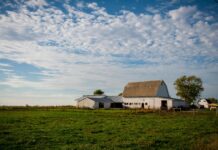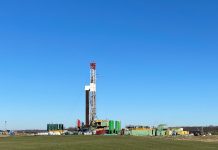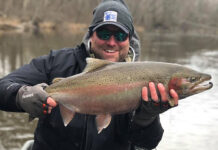A farmer from a temperate zone, such as one who farms in Ohio, looking for the first time at a tropical rainforest would be wrong to think of the landscape as a farming bonanza. Many would think: “Just cut down these trees and let’s plant some useful crops. If this forest is so luxuriant, surely a field of alfalfa, corn, or soybean should grow wonderfully. Heck, one could probably triple-crop this land!”
This is in fact what colonists thought and they were dead wrong. Tropical soils are nutrient poor. Soils don’t accumulate organic matter because the forest is generally so warm and humid throughout the year that any plant material falling on the ground is rapidly broken down by termites, fungi and bacteria.
The average depth of organic material below the floor of rainforest is typically measured in milliliters (tenth of an inch) instead of the inches that we have in Ohio. In addition, most minerals useful to plants in these soils have long ago been weathered away.
Danger
The main consequence of tropical rainforest clearing for agriculture has not been very good. After one or two crops of corn, the few nutrients left in the soil are used up. So the land must be abandoned; the system is unsustainable.
This series of failures is what gave birth to the concept of sustainable farming, long before the term was hijacked to mean something that has little to do with true sustainability: a farming system that can be maintained and be productive for as long as we can imagine.
This can only be achieved if profitability is realized, something that the Brazilian government is ensuring through extensive and continuous education of those working the land and significant investments in research — production research — to ensure a steady flow of new knowledge and technologies for their farmers.
Brazilians clearly understand that sustainability is first and foremost dependent on economic viability. Other things are irrelevant if economic viability is not ensured.
Comparison
Contrast this with the situation on most Ohio dairy farms. Many of our farms have been here for many generations. In spite of what some urbanites might think, our farming systems have been very resilient and extremely sustainable.
Chemical fertilizers have been extensively used to enrich our soils, pesticides have been used when having a green thumb was no longer sufficient. The nutrition of our cows has evolved to such an extent that the average dairy cow in Ohio is fed a better diet (ration) — one that addresses the nutritional needs – than most human diets.
And after so many years of toils and labor, the real threat to the sustainability of our dairy farms is not whether we can keep doing it sustainably, but whether there will be anyone left to do it. The current system of milk pricing is not sustainable.
Similar
In a sense, we are doing to our dairy farmers what colonists were doing to the tropical rain forest. When the last bit of nutrients left is used up, corn no longer grows. Likewise, when the last penny of equity has been sucked out of our dairies we will have suffered the human equivalent of slash-and-burn. The issue of whether tail-docking cows should be made illegal by an elite state committee will be irrelevant when the last dairy producer has finally given up.
(The author is an Extension dairy specialist at Ohio State University. Questions or comments can be sent in care of Farm and Dairy, P.O. Box 38, Salem, OH 44460.)












